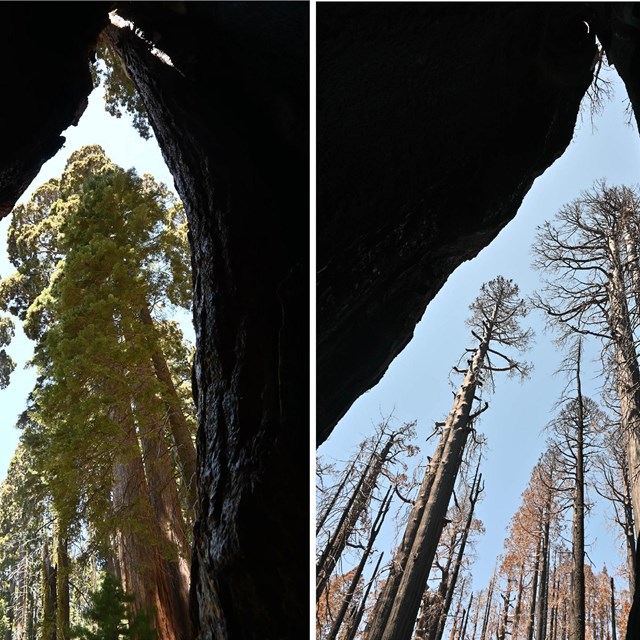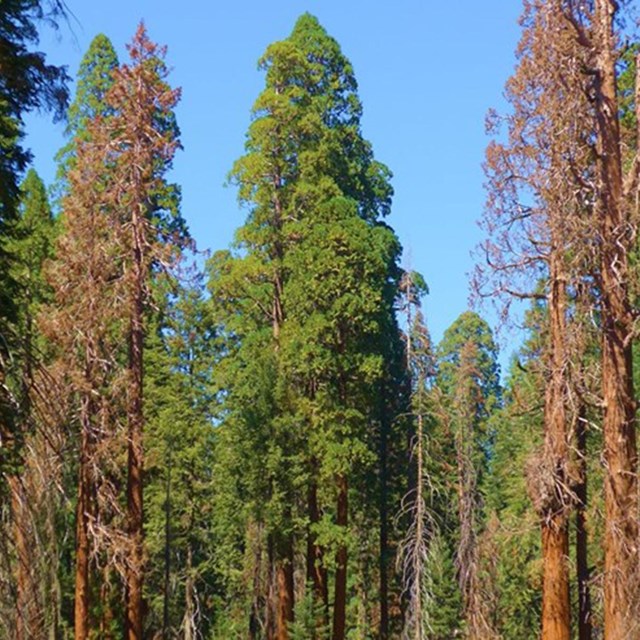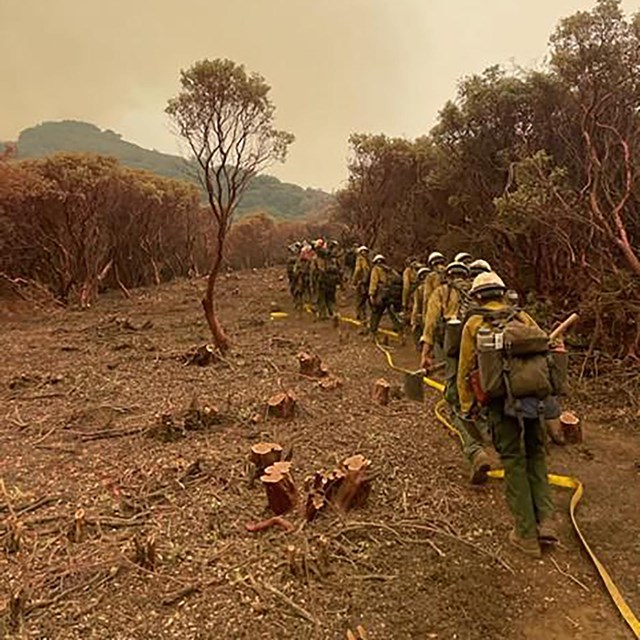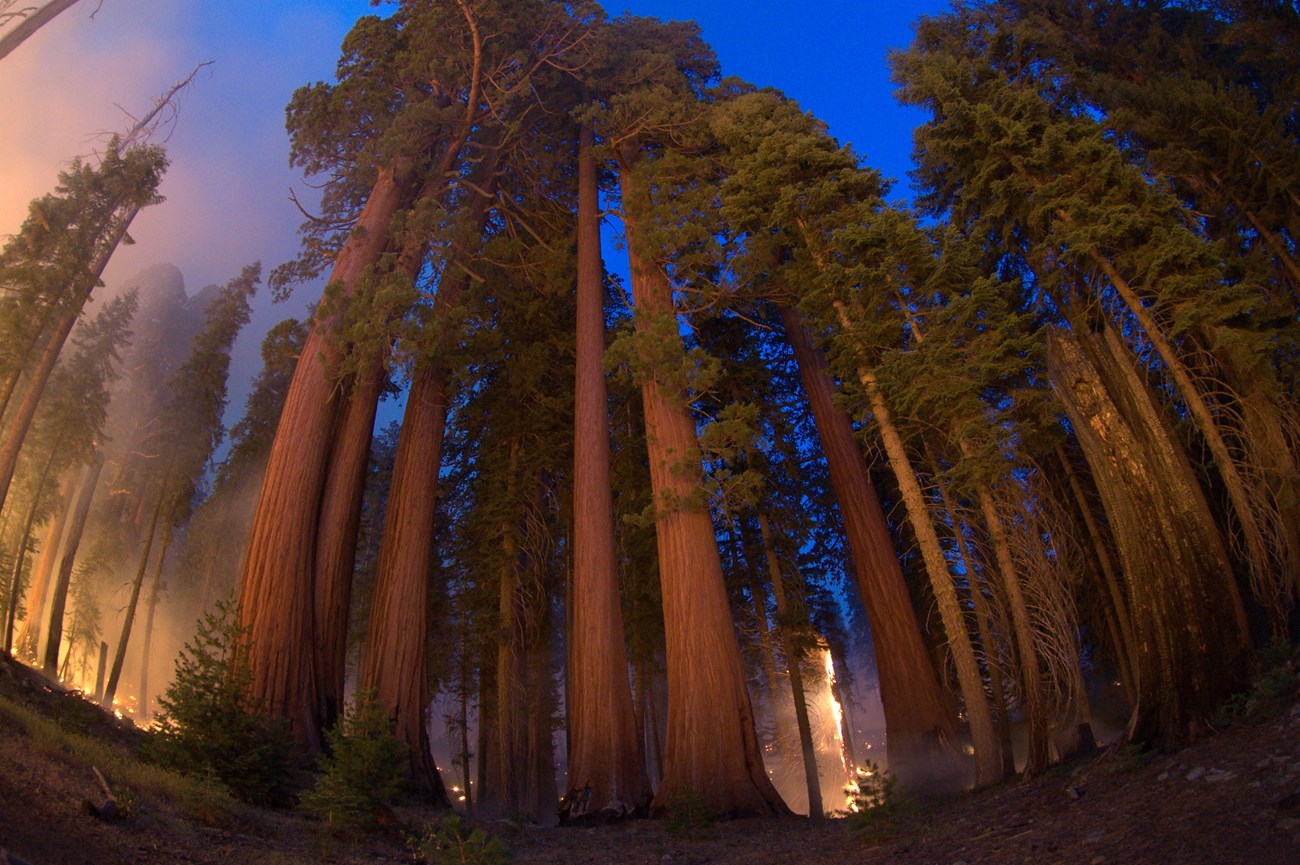
NPS photo / Anthony Caprio Research using tree rings has helped us learn more about fire history in sequoia groves. Understanding how often, where, when, and how fire burned in the past informs how we can effectively use fire to restore and maintain healthy forests. 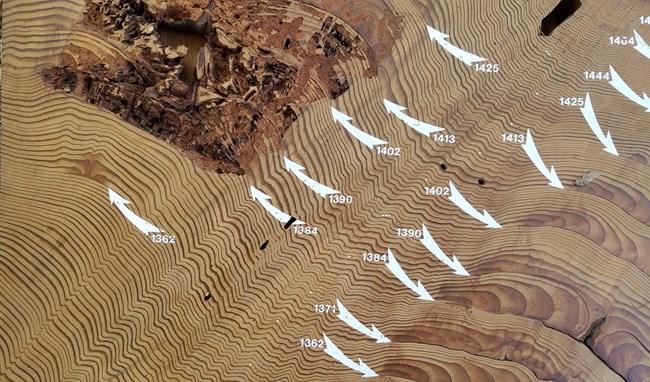
NPS photo / Anthony Caprio Fire HistoryTo learn about the fire history of a sequoia grove, we need to go back in time much further than written or oral history records that span just one to two centuries. When trees can live for 2,000 to 3,000 years, it's important to understand the longer term history of fire in these forests, and how that history relates to climate. Many conifer tree species such as giant sequoias and pines can operate as "recorders" of fire events. When these trees are injured but not killed by fire, the healing process leaves accurate records as fire scars on their trunks. Each scar from a fire is associated with a specific tree ring. Thus, if the rings can be accurately dated to a calendar year, a record (or chronology) of fire scar dates can be created. Dendrochronologists (scientists who use tree rings to date events) have produced chronologies of fire events for five different giant sequoia groves in the southern Sierra Nevada (three of these groves are in Sequoia and Kings Canyon). In general, fires occurred more frequently during dry stretches of time (from years to decades) and less frequently during wetter time frames. In the park’s Giant Forest grove, wide-spread fires occurred at intervals ranging from about 6 to 35 years, depending on the time period. Fire occurred with the highest frequency at four of the five studied groves during the warm and drought-prone period from the years 800-1300. 
NPS / Anthony Caprio When Fire Is Excluded – What Happens?During the century from the late 1800s until the late 1900s, fire was rare in many giant sequoia groves due to land use changes and many decades of fire suppression. What were the consequences for giant sequoias? As tree ring studies revealed the fire history of sequoia groves, they also were used to age sequoias to better understand the population of giant sequoias in three groves — Giant Forest and Atwell Groves in Sequoia National Park and Mariposa Grove in Yosemite. Were there enough young trees to replace the older ones in future years? Scientists extracted pencil-width cores from 659 giant sequoias in these groves. They sanded these cores and used the tree rings to age the trees. They determined how many trees established each century between 500 B.C. through the 1900s and learned that the population was stable or increasing up through the 1800s. But in the 1900s, there was a massive failure of giant sequoia reproduction. Why? Without fire, conditions did not favor growth and survival of young sequoias. Before the arrival of European settlers in the mid-1800s, successful establishment of mature sequoias depended on fires intense enough to kill the tree canopy in small areas, allowing enough light for young sequoias to grow and thrive. Giant sequoias are a pioneer species—they are among the first to take root after a disturbance occurs. Another consequence of the lack of periodic fire is that burnable material, or fuel, accumulates. When trees and shrubs become more dense and logs, sticks, and fallen leaves or needles build up on the ground, higher severity fire is more likely to occur. When fire burns more often, it thins out younger trees, and reduces fuel on the ground. As park managers learned about the importance of fire to giant sequoias, they began to gradually bring fire back to giant sequoia groves through prescribed fire. 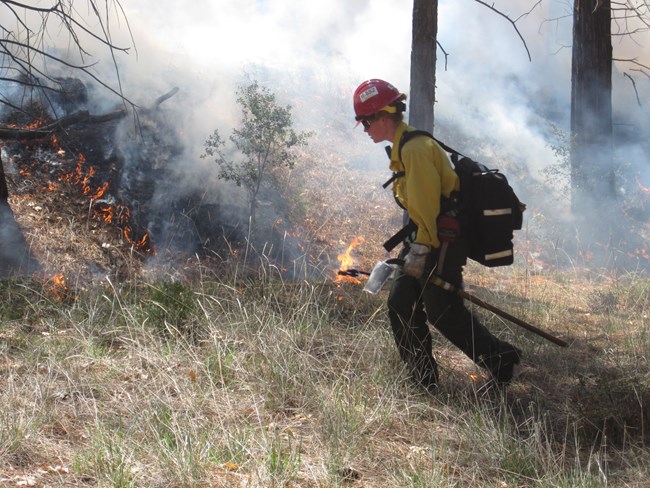
NPS photo / Anthony Caprio Prescribed burning continues today, and where burns reduce the density of smaller trees and create sunlit gaps, young sequoia trees are taking root. One century of missed reproduction is not enough to threaten the future of these long-lived trees. But it remains a high priority to sustain frequent enough fire in these forests to produce many young sequoias and to reduce fuels, helping these groves be more resilient to the impacts of a warming climate and high-severity wildfire. Enough young trees must survive the challenges of insects, disease, drought, and occasional fire to become the monarch giant sequoias for future generations to enjoy.
Visit our keyboard shortcuts docs for details
A short video on how prescribed fire mitigated damage to sequoia groves during the 2021 KNP Complex fire. Recent High-Severity Fires Kill Many Large SequoiasLarge wildfires that had unprecedented impacts on giant sequoia groves burned within and near Sequoia and Kings Canyon National Parks in 2020 and 2021. While these fires appear to have burned at low severity in most of the sequoia grove area, a large number of sequoias were killed, particularly in areas of high to moderate severity fire. In some areas that burned during these fires, previous prescribed fire work appears to have reduced fire severity. Taken together, these fires are estimated to have killed 13 to 19 percent of the large giant sequoias in the entire Sierra Nevada population. More details about these fires are summarized below. Download an infographic, A Burning Threat, about the impacts of severe wildfires and warming climate on giant sequoias. 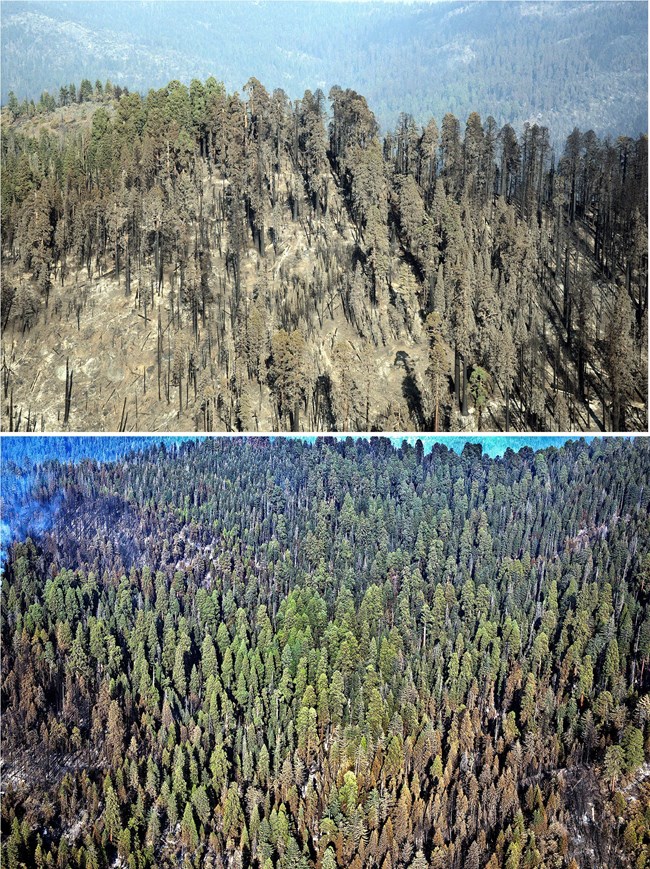
NPS / Tony Caprio. Photos taken during a helicopter flight surveying burned groves in the KNP Complex Fire on October 12, 2021. 2021 KNP Complex Fire and Windy FireKNP ComplexLightning ignited three fires in Sequoia National Park on September 9, 2021. One fire was contained quickly, but the Colony and Paradise fires burned in extremely steep terrain with lack of trail or road access, and the high density of drought-killed dead trees presented risks to firefighters.These access and safety issues challenged fire-fighting efforts. By September 17, these fires merged, becoming the KNP Complex. The fire was fully contained on December 16 at 88,307 acres, after storms brought substantial rain and snow. WindyThe September 9th lightning storm that ignited the KNP Complex fires also started the Windy Fire, located south of Sequoia National Park in Sequoia National Forest and the Tule River Reservation. It burned 97,528 acres by a containment date of November 15, 2021. Scientists estimate that between 931 to 1,257 large sequoias were killed or will die in the next 3-5 years. Taken together, the combined loss from the KNP Complex and Windy fires is estimated to be 2,261 to 3,637 large sequoias that have already been killed or will die in the next three to five years, or 3 to 5 percent of the sequoias in the entire Sierra Nevada population of large sequoias. 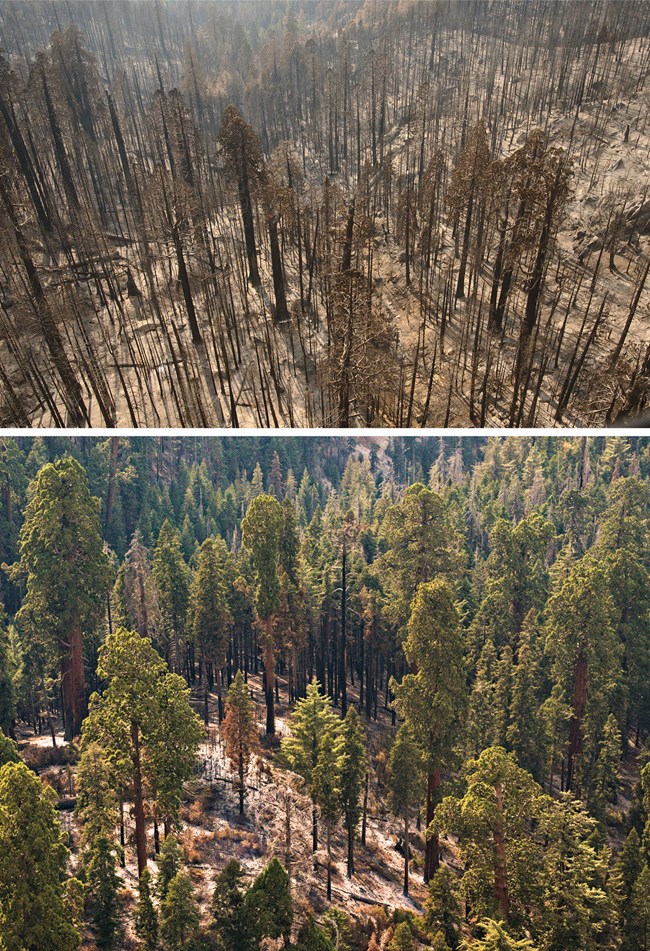
NPS / Anthony Caprio (taken on a November 2, 2020 aerial survey by helicopter) 2020 Castle FireThe 2020 Castle Fire (part of the SQF Complex fire) started from a lightning strike on August 19, 2020 in Sequoia National Forest and later burned into the southern portion of Sequoia National Park. Firefighting teams worked actively to contain the fire, however, a combination of fuels, topography, and weather resulted in high fire severity in some areas. Hazardous and smoky conditions hampered fire control efforts, and many fires burning at once across the state competed for fire-fighting resources. Wildfire & Climate Effects
Exploring New Threats to Giant Sequoias |
Last updated: September 12, 2023

